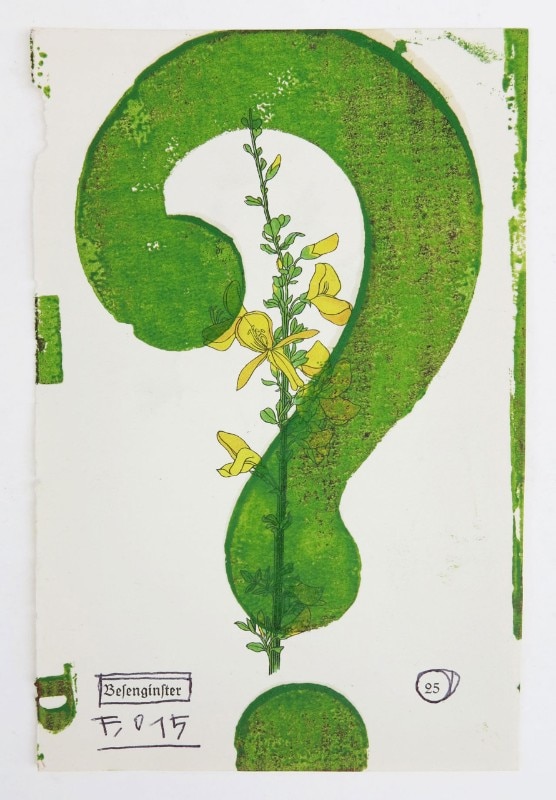This article was originally published on EcoWorld special issue, attached to Domus 1027, September 2018.
Something is sustainable if it can be upheld without its weight crushing us. We normally use the word sustainable as a synonym for ecological, without thinking that the former implies a propositional wish, “so that I may survive the weight of the world”. At the moment, obviously, this weight is represented by the fearful environmental crisis, a monster that has become a design business containing the sectors ecological design, green urban planning and the study of new materials.
Here we see projects that do not take on the real problem, but use it in their favour. It’s called greenwashing. Instead of solving the problem that led to its birth, the green economy has a paradoxical interest in not solving it. It makes me think of a phrase shouted at Robespierre by his enemies and the enemies of the Revolution on a crowded square: “What would you do without us?” [1]
We should not behave ethically to satisfy consumers, but to eliminate the pain and suffering of the creatures we consume
I don’t mean this as sterile criticism. Of course the attention given by designers to the environment is important, but it does not always correspond to an efficient solution. Gilles Clément writes that Ernst Haeckel coined the word ecology in 1866 as “the science of the relationship of the organism to its environment”. This means that the ecological crisis has a direct impact on the daily life of all the inhabitants of the planet. In the Western world, it might refer to the torrid climate that has made summers in Northern Europe become typically African or Asian.
It is important to me to emphasise the non-effectiveness of much contemporary architectural design, because systemic ethics (meaning not individual choices, but the wish for a structural change in society, in the status quo) only acquires sense when it does away with what I call the threshold problem. The demand that regulates the market and contributes to making the global ecosystem unsustainable (petroleum production, aerial mobility and urban planning that is inconsiderate of the environment) can theoretically only be reversed in trend by 50 per cent plus one of us (this is the threshold) who refuse to participate in feeding it economically.

Becoming sustainable in order to save the planet would make sense only if we were the “plus one” able to shift the axis of consumption. Otherwise, sustainability is nothing but an obligation conditioned by a consequence over which we have no certainty. Sustainability can only force us to change our lifestyle if we have the certainty of attaining the desired outcome, which is why we are seeing the generation of a stalemate in crossing the above-mentioned threshold. [2] Some might object: Is the growing offer of sustainable alternatives not connected to the real impact of individual choices? Yes, individual acts have (a tiny) impact on the market, but not on the general equilibrium of the planet we want to save. We should not choose sustainability to gratify our own need, but the need of others. We should not behave ethically to satisfy consumers, but to eliminate the pain and suffering of the creatures we consume.
To understand the issue in depth, it is necessary to embrace the idea that something can be sensible without being useful. To the contrary, some aspects of sustainability might be downright difficult, bothersome or ghettoising, including getting around by bicycle, changing your diet and closing the city centre to traffic.
For the time being, designing daily life, architecture or objects under the matrix of sustainability has a mostly symbolic value. Even people like Stefano Boeri, an architect who has concentrated most of his recent professional activity on green building, admit this. We are inside of what is nothing more than rhetoric. [3] Suffice it to know that Bosco Verticale, a plant-adorned apartment high-rise designed by Boeri in the Porta Nuova quarter of Milan, absorbs less than 25 tons of carbon dioxide per year and produces 60 kilos of oxygen per day, while one round-trip flight from New York to Europe produces 2 or 3 tons of carbon oxide per person. If we think that sustainability exists in order to resist the weight of a crumbling world, then in no way are we bridging the threshold effect of which I spoke.
For the time being, designing daily life, architecture or objects under the matrix of sustainability has a mostly symbolic value
At least we are talking about it, you might say. Speaking of which, the theme of next year’s Triennale event in Milan directed by Paola Antonelli (a senior curator at the Museum of Modern Art in New York) is the fragility of nature. Yet current scientific data say that our time for discussion has run out, and the overall energy of the planet is not in difficulty, but decreasing. If we really want to embrace sustainability as a concrete tenet of daily life and design, we must force ourselves to abandon rhetoric and symbolism and rapidly put into place effective solutions. Contemporary philosophy (Peter Singer, for instance [4]) measures effectiveness in terms of the real impact our projects have on the world.
I’d like to extend an open invitation to shift architecture away from the symbolic dimension (which we perhaps could afford to embrace back in the 1960s when there was Superstudio and radical architecture) and head toward the concrete dimension of effective change in our relation with the nonhuman environment, with ecosystems.
Unfortunately, surpassing the threshold effect and abandoning rhetoric means calling into question many of the privileges we acquired back when architectural design was still anchored to anthropocentrism. I am imagining the design of lifting the weight of humans on the world, a design that is sustainable because it decreases the load we need to carry, instead of strengthening the structure that must carry this weight.
The future has the shape of a hut, not a skyscraper. The sooner we understand this, the sooner it will make sense to hope that we can exit a situation in which all of us seem endangered. We could suddenly be saved.
Cover illustration Francesca Bazzurro. Courtesy Galleria l’Affiche, Milan
- 1:
- Gilles Clément, L’Alternative ambiante, 2009.
- 2:
- I discuss the paradoxical problem of radical ethics at length in my book Vegan. Manifesto filosofico, Einaudi, Turin 2018.
- 3:
- Leonardo Caffo and Stefano Boeri, No Church in the Wild: costruire mondi senza gerarchie in Vegan Italy issue 3, November 2015, pages 18–22.
- 4:
- Peter Singer, The Most Good You Can Do: How Effective Altruism Is Changing Ideas About Living Ethically, Yale University Press, New Haven, Connecticut 2015.


